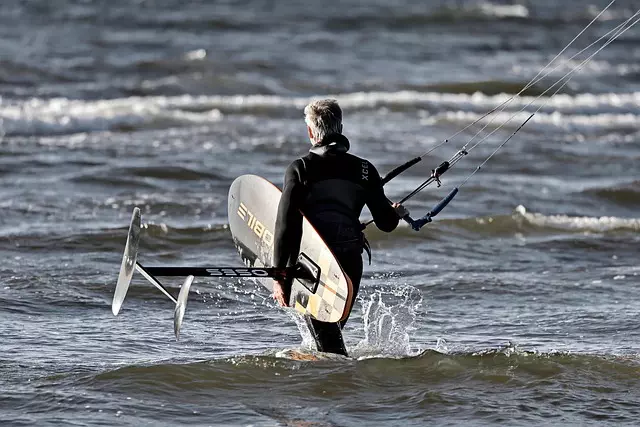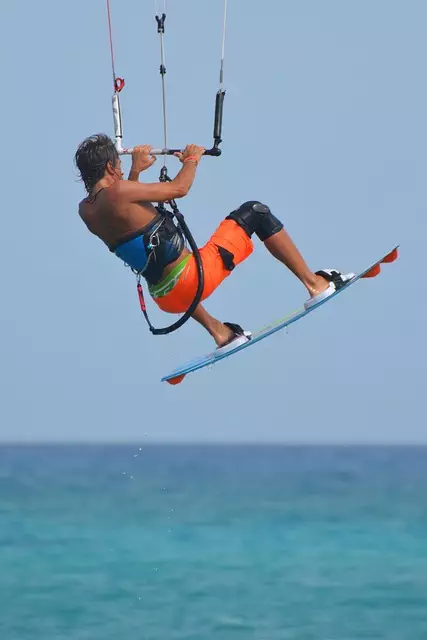For beginner surfers, traction is crucial for enjoying the sport successfully. The right surfboard shape, fin design, and construction materials create essential grip. Grip pads (traction pads) further enhance this, providing extra underfoot grip for control during turns and movements. By prioritizing adequate traction, beginners can focus on learning fundamentals without slipping or losing control. For surfboards designed for beginners, basic grip pads with moderate texture are ideal for learning. Advanced surfers can opt for specialized pads tailored to their styles. When choosing a grip pad, align it with your surfing goals and skill level, ensuring comfort, durability, and strategic placement for better control. Installing grip pads requires careful preparation and precise placement techniques. Grip pads significantly improve safety by minimizing slipping risks, offering an extra layer of protection against injuries. For newcomers, selecting suitable grip pads on a surfboard for beginners is a game-changer, enhancing maneuverability and providing a more enjoyable learning experience.
Grip pads, a simple yet powerful accessory, are essential for enhancing traction on surfboards, especially for beginners looking to conquer waves with confidence. This guide delves into the world of grip pads, shedding light on their critical role in improving performance and safety. From understanding the fundamentals of traction to exploring various pad types and selection tips, we’ll equip novice surfers with knowledge to make informed choices. Discover how the right grip pad setup can transform your surfboard experience, making every ride smoother, more controlled, and ultimately, more enjoyable.
Understanding Traction and Its Role for Beginners

For surfboard for beginners, understanding traction is crucial to mastering the art of surfing. Traction refers to the grip between your surfboard’s bottom (or fins) and the ocean’s surface. It plays a pivotal role in enabling surfers to change directions, maintain balance, and perform maneuvers effectively. On a surfboard, traction is primarily achieved through its shape, fin design, and the type of foam and resin used in construction. For beginners, it’s essential to choose a board with adequate traction, as this will significantly impact their learning curve.
Grip pads, also known as traction pads, are specifically designed to enhance traction further. They serve as extra grip points underfoot, helping surfers maintain control during turns and quick movements. This is particularly beneficial for beginners who are still developing their sense of balance and footwork. By providing added grip, grip pads can make learning to surf feel more secure and intuitive, allowing beginners to focus on mastering the fundamentals without worrying about slipping or losing control.
The Purpose of Grip Pads on Surfboards

Grip pads, also known as nose and tail pads, serve a crucial role in enhancing traction and control for surfers, especially those just starting their journey on a surfboard. For beginners, navigating the waves can be a challenging task due to the slippery surface of the board. Grip pads provide much-needed friction at both ends of the surfboard, enabling better balance and stability while standing up and riding.
These pads are designed to fit seamlessly into the nose and tail areas of the surfboard, offering a secure grip that prevents slipping during critical maneuvers like turns and cuts. By improving control, grip pads allow beginners to focus on mastering the art of surfing rather than worrying about maintaining their stance. This simple yet effective accessory can significantly contribute to an enjoyable and safer surfing experience for newcomers to the sport.
Types of Grip Pads: A Comprehensive Overview

Grip pads, also known as surfboard traction pads, come in a variety of types designed to suit different surfing styles and skill levels. For surfboard for beginners, a basic, universal grip pad is often recommended. These pads typically feature a flat or slightly curved surface with a moderate texture, offering enough hold for learning without being too specialized.
More advanced surfers might prefer tailored grip pads that cater to specific disciplines like shortboarders who love tight turns and manœuvres, or longboarders who favor smooth, flowing rides. Specialized pads for these groups often have unique shapes and textures designed to enhance performance in their respective surfing styles, from the sharp angles of shortboarding to the fluid motion of longboarding.
How to Choose the Right Grip Pad for Your Board

When selecting a grip pad, especially for your first surfboard, consider the type of surfing you plan to do and your skill level. For beginners, look for pads with moderate traction patterns. These offer enough grip for learning and improving without being too slippery, which can be dangerous for newcomers. Ensure it fits comfortably on your board, aligning with the fins’ position for optimal control while paddling and performing turns.
The material matters too; rubber or synthetic blends provide good flexibility and cushioning, reducing fatigue during long sessions. Check reviews to understand how well a pad performs over time, as durable construction can save you from frequent replacements.
Installation and Placement Techniques

When installing grip pads, or ‘surfing rubber’ as it’s often called, on a surfboard designed for beginners, it’s crucial to follow precise placement techniques. The first step is to clean the board’s surface thoroughly to ensure optimal adhesion. Next, measure and mark the desired locations for the grip pad, considering your stance and comfort during surfing. For beginners, placing the pads slightly forward of the center point can offer extra balance and stability.
Once marked, cut the grip pad to size, making sure it fits snugly without overlapping the board’s fins or other fixtures. Apply a thin layer of adhesive along the back of the pad, pressing it firmly into place. Allow adequate drying time as per the adhesive manufacturer’s instructions before enjoying your enhanced surfboard, tailored for improved traction and control—perfect for refining those skills in the water, especially for those just starting their surfing journey.
Benefits: Enhanced Performance and Safety

For surfboard beginners, grip pads offer more than just a comfortable place to place your hands—they’re a critical component that enhances both performance and safety in the water. By providing better traction on the slippery surface of the surfboard, grip pads enable novices to maintain control while paddling, carving turns, and performing other maneuvers. This improved stability not only boosts confidence but also allows beginners to focus on refining their technique without worrying about slipping off the board.
Moreover, enhanced traction from grip pads plays a pivotal role in ensuring safety during surfing sessions. Even experienced surfers can encounter challenging conditions where slipping becomes a real risk. Grip pads act as an additional layer of protection against these scenarios, minimizing the potential for accidental falls and reducing the risk of injury. This added security is particularly valuable for surfboard beginners who are still developing their balance and understanding of ocean dynamics.
Top Picks for Best Grip Pads for Beginners

For those just dipping their toes into the world of surfing, choosing the right grip pads can make all the difference. When it comes to surfboard for beginners, opt for pads that offer excellent traction and comfort. Top picks often feature a combination of non-slip surfaces and lightweight designs, ensuring easy maneuverability without adding excessive bulk.
Look for pads with strategic placement of grip elements, catering to both hands and feet. Beginners will appreciate products that are easy to install and remove, allowing them to adjust their setup as they gain experience. These key features not only enhance control but also contribute to a more enjoyable learning curve on the waves.
